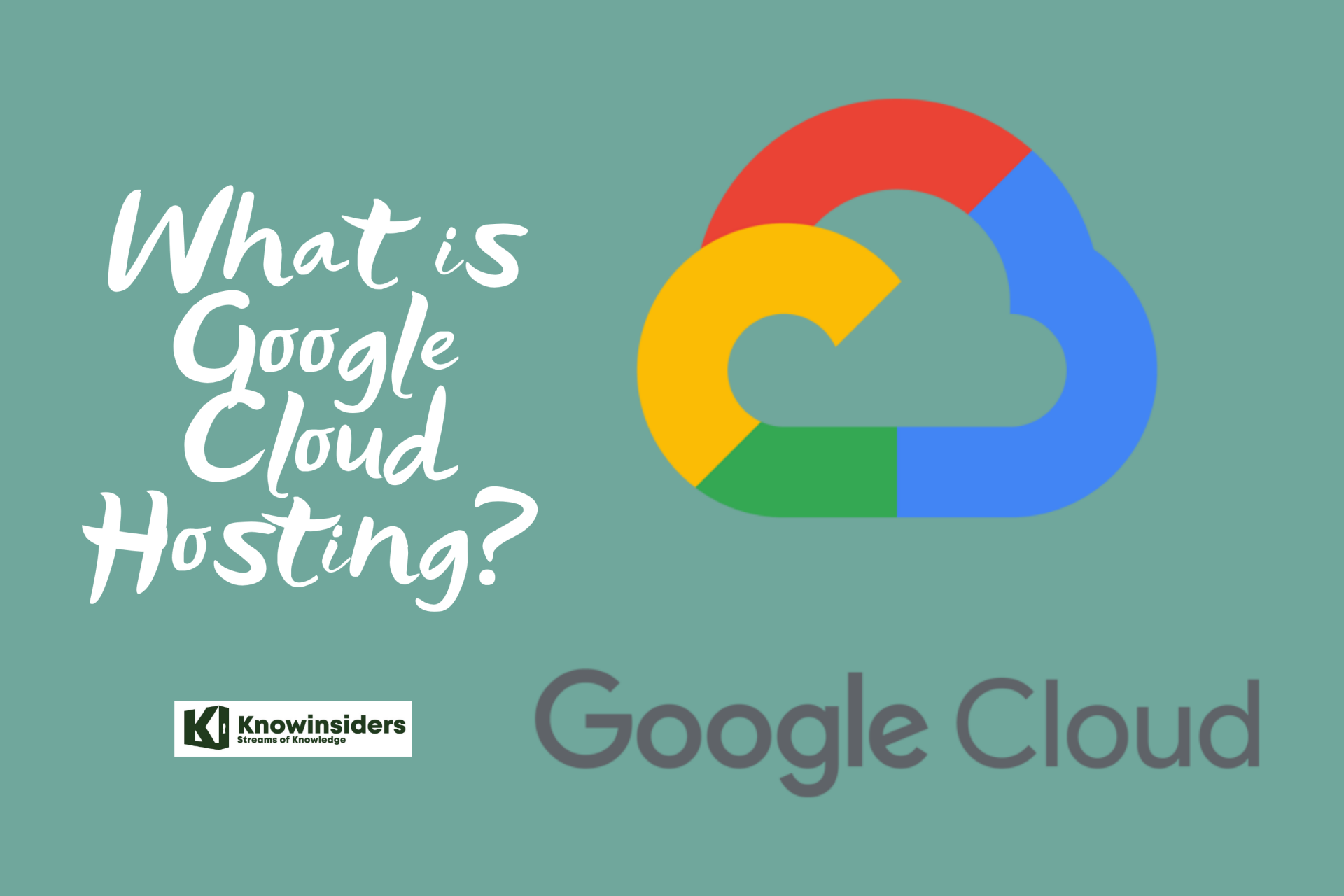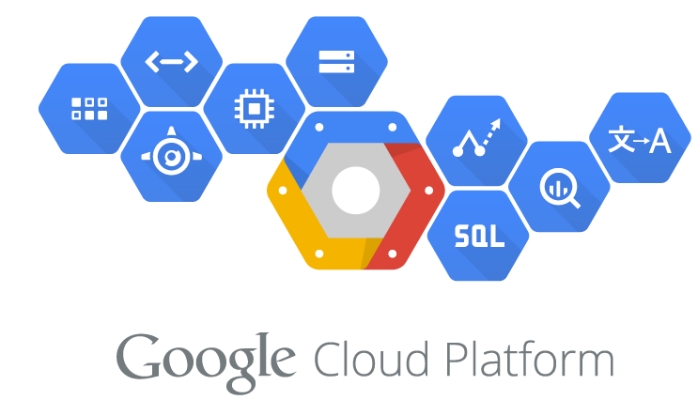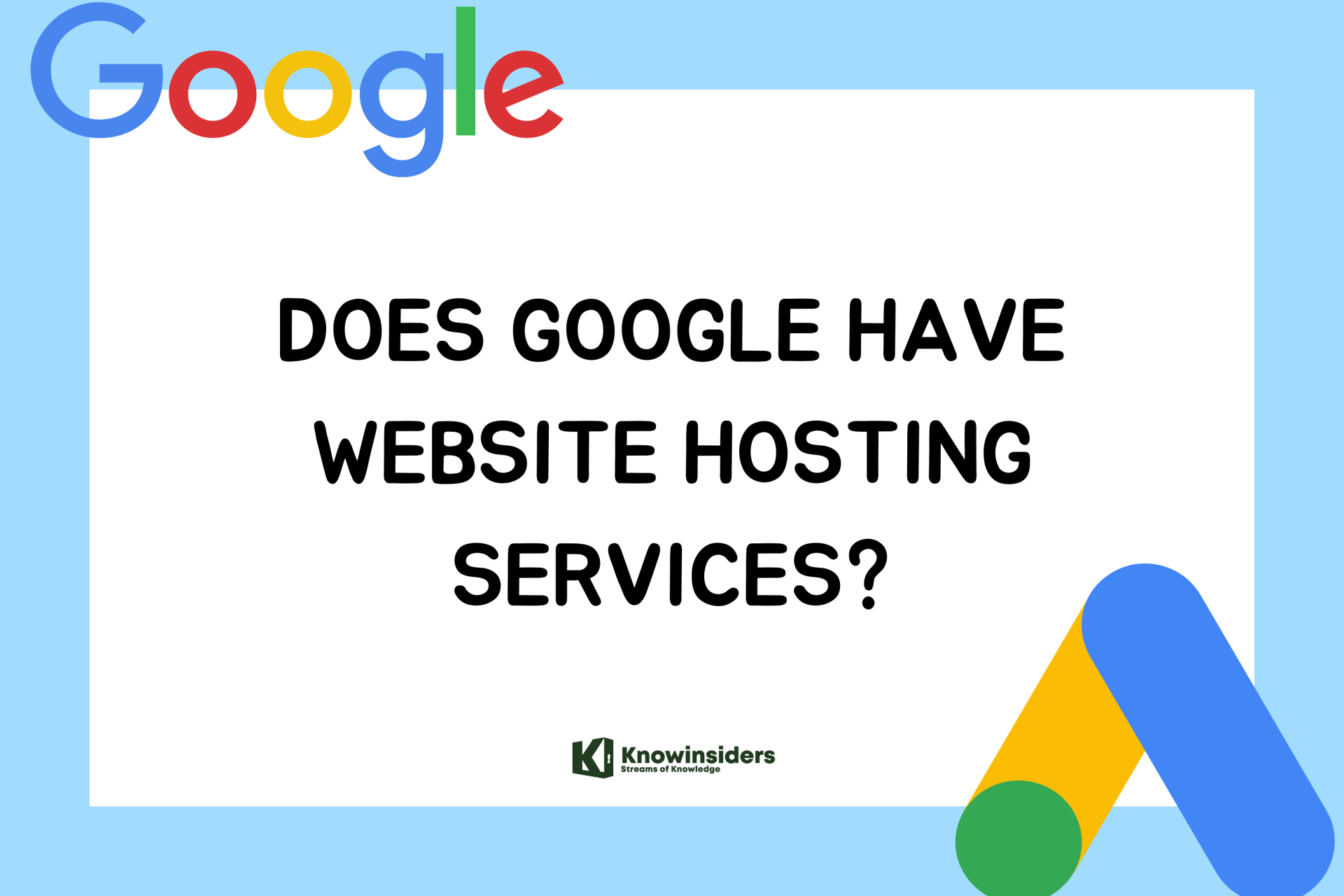What is Google Cloud Hosting: Free, Advantages, Services
 |
| Google Cloud Hosting. Photo: KnowInsiders |
Cloud Hosting provided by Google is known as Google Cloud Hosting. Google provides Cloud Hosting free for the first 12 months with a free trial plan. After that, you can opt one of the available Google Cloud Hosting Pricing plans. You can also check Google Cloud Platform Pricing plans to avail the various services offered by Google.
What is Google Cloud Platform (GCP)?
Google Cloud Platform is a set of Computing, Networking, Storage, Big Data, Machine Learning and Management services provided by Google that runs on the same Cloud infrastructure that Google uses internally for its end-user products, such as Google Search, Gmail, Google Photos and YouTube.
You can go through this Google Cloud Provider video lecture where our GCP Training expert is discussing each & every nitty-gritty of the technology.
Google Cloud vs Google Cloud Platform
Google Cloud includes a combination of services available over the internet that can help organizations go digital. Google Cloud Platform (which provides public cloud infrastructure for hosting web-based applications and is the focus of this blog post) is a part of Google Cloud.
Some other services that are a part of Google Cloud include:
* Google Workspace, formerly known as G Suite and Google Apps. This product provides identity management for organizations, Gmail, and collaboration tools.
* Enterprise versions of Android and Chrome OS. These phone and laptop operating systems are ways for users to connect to web-based applications.
* Application programming interfaces (APIs) for machine learning and enterprise mapping services. These provide software-to-software communication.
While Google’s GCP cloud infrastructure is the backbone of applications like Google Workplace, these applications aren’t what we’re talking about when we talk about GCP. For this post, we’re focusing on Google Cloud Platform.
How does the Google Cloud Platform work?
Cloud computing today allows hardware and software products to co-exist remotely (in data centers) and at-scale. Together these products work to deliver specific services. Users typically can access, manage, and use the tools they require via a web-interface – and that’s true for Google Cloud Platform services as well.
In addition to service accessibility, users also gain flexibility and choice when working with Google Cloud Platform: Each service is available ‘a la carte’ so that users can leverage different resources to develop the infrastructure they need.
Once they have identified the Google Cloud Platform services that would benefit them, users simply create a “project” via the intuitive, web-based GCP Console. Better still, project owners can manage which team members or admins have access to which services.
 |
| Photo: Vietvuevent. |
Why Google Cloud Platform?Now that you have a brief idea of What is Google Cloud Platform and Cloud Computing, let’s understand why one must go for it. Google Cloud Platform, is a suite of cloud computing services that run on the same infrastructure that Google uses internally for its end-user products, such as Google Search, Gmail, Google Photos and YouTube. We all know how big is the database of Gmail, Youtube and Google Search. |
Overview of Google Cloud Hosting
Cloud hosting offered by Google is called Google Cloud Hosting. Google offers free cloud hosting with a free trial plan for the first 12 months. You may choose one of the available Google Cloud Hosting Pricing plans at the expiry of this trial period. You can also review Google Cloud Platform pricing plans to take advantage of various services offered by Google.
If you don’t want to use any of the Google Cloud Platform Pricing plan or Google Cloud Hosting Pricing plan, you can also choose the free version of Google Cloud i.e. Google Cloud Platform Free Tier. Google’s free tier cloud platform gives you the power to utilize and learn Google Cloud Free services.
Which are Google Cloud Hosting Advantages?
Now let’s take a look at some of the top advantages to using Google Cloud Hosting and why we think it is currently the best solution on the market as it pertains to pricing, performance, stability, scalability, backups, and security.
1. Better Pricing Than Competitors
Google bills in minute-level increments (with a 10-minute minimum charge), so you only pay for the compute time you use. And a big bonus is that they give you discounted prices for long-running workloads with no up-front commitment required. Use the VMs for a month and you get a discount, as simple as that. This makes it perfect for startups and for enterprise IT to cut costs. AWS, for example, requires prepays in the form of “reserved instances” to be eligible for the discounts. And Azure only offers a 5% discount on a 12-month prepay.
Sandeep Dinesh did a good comparison recently of just how cheap Google Cloud’s SSDs are when it comes to performance vs price and a comparison against AWS and Azure. To start off, instances are simply lower in cost on Google Cloud Platform, Compute Engine alone is typically between 40% – 50% cheaper than AWS and Azure.
2. Improved performance
At the company level, Google has improved the performance of Google Cloud Hosting. One can access data from anywhere via remote. It has a large infrastructure that makes it easy to carry out various complex operations on its network.
Google Cloud Machines can handle a lot of visitors at any time. If you are planning to switch to Google Cloud Hosting, you will experience a decrease in your webpage load time.
3. Live Migration of Virtual Machines
Another huge advantage for Google Cloud Hosting, especially for how we use it here at Kinsta is live migrations of Virtual Machines. Neither AWS, Azure, or smaller providers like Digital Ocean offer this functionality. So this is a very important differentiator for Google Cloud compared to other cloud providers. As a WordPress hosting provider, this means we are basically always up with our VMs, with no noticeable degradation in performance when they are live migrating VMs between host machines.
Benefits of live migrations allow for the engineers at Google to better address issues such as patching, repairing, and updating the software and hardware, without the need for you to worry about machine reboots. Miche Baker-Harvey, Tech Lead/Manager at Google put together a great illustration of the high-level steps involved in a live VM migration.
And besides live migration of virtual machines, Google also offers resizing of persistent disks without any downtime. You can use the portal or CLI to actually resize the live disk.
4. Private network
 |
| Photo: sneppets |
Users get maximum time and efficiency through a private network. The Private Network means that Google provides each client with its own network for more control and scalability through the network. Private networks are the backbone of Google Cloud Hosting. Google uses fiber optic cables that are more efficient than other cables when it comes to spreading the network. The networks through fiber optics can handle a lot of traffic.
5. Commitment to Sustainable Development
Google Cloud Hosting is a part of the Google Cloud Platform. Google is also rapidly developing its infrastructure to meet customers’ needs. In the near future, we will see the expansion of Google’s infrastructure in new locations. This helps build a strong Google’s network. Google is currently present in 17 locations.
6. Control and security
Google has its own security model that is currently protecting Gmail, YouTube, and other products. Google has hired a large number of security experts to help Google protect the data on servers. All the data and information on cloud platform data services are encrypted. Google has a robust network of internet provider networks (ISPs) and it also proactively invests in protecting its network and data.
7. Redundant Backups
Google Cloud Storage is designed for 99.999999999% durability and has 4 different types of storage: Coldline storage, nearline, regional storage, and multi-regional storage. It stores data redundantly, with automatic checksums to ensure data integrity. The beauty of multi-regional storage is that it is also geo-redundant, which means cloud storage stores your data redundantly in at least two regions within the multi-regional location of the bucket. As it pertains to Google Cloud hosting, this ensures you will never lose your data, even in the case of a disaster.
Which are Basic Google Cloud services?
Here are the principal services that GCP offers its customers:
Google Compute Engine
Compute Engine (GCE) is the basic service Google offers that competes with the basic, premier service that Amazon offers: hosting virtual machines. In data centers, workloads (applications and services) tend to be run on software-based platforms that may be moved from physical machine to physical machine. In fact, more than one of these VMs can be hosted by a physical server, improving efficiency. The VM concept was created to enable portability within the data center; cloud services such as GCE take that same format, attach a self-provisioning deployment mechanism to it, and charge customers for the resources these VMs use.
A "unit" of virtual machine resources (memory, storage, processor power, network throughput) that is assembled to run like a physical server with the same levels of physical resources, is called an instance. Typically, a service provider may charge fixed rates per month for the use of that instance in minutes, as well as other resources it may consume. To be more competitive, GCP charges its customers in increments of seconds instead of minutes. It also gives customers the option of dialing the precise resource buildout they need for their VMs, which is useful for enterprises that still rely upon legacy applications (a nicer way of saying "old programs") that were tailored specifically outfitted physical machines.
Google Cloud Storage
GCP's Cloud Storage (GCS) is an object storage system, which is to say, its records maintain both the identity and the structure of any class of data given to it. Unlike a typical storage volume's file system, where each file or document is rendered as a string of digits whose location is registered in a file allocation table, object storage is an all-purpose block that's leased to consumers like space in a park-and-lock. It can hold entire organized databases, raw video streams, or matrices for machine learning models.
Nearline
Nearline is a way to utilize Google Cloud Storage for backup and archival data -- the kind that you wouldn't necessarily consider a "database" per se. Data stored here is intended to be accessed no more often than once per month, by one user. Google calls this model "cold storage," and has adapted its pricing model to enable Nearline to be more price-competitive for such low-utilization purposes as system backups.
Google Cloud workload deployment services
 |
| Photo: Viettel IDC |
Although GCP does offer virtual machine instances as table stakes for the cloud computing market, this isn't really where Google has opted to compete. As the progenitor of Kubernetes, GCP concentrates most of its efforts towards providing enterprises with the means of deploying and operating containerized workloads.
Google Kubernetes Engine
A container (still called in some circles a "Docker container," after the company that made it popular) is a more modern, flexible, adaptable form of virtualization. Rather than re-creating a physical server, it encapsulates just the resources an application needs to run, then hosts that application on the server's native operating system. Think of the difference between a container and a virtual machine as analogous to that between a single light bulb and a battery-driven flashlight.
GCP's fully managed, hosted staging environment for containerized applications is now generally known as Google Kubernetes Engine (GKE, having originally been launched as Google Container Engine). A container is designed to be executed on any system or server with the underlying infrastructure required to support it. A Linux container still needs Linux, and a Windows container needs Windows, but besides that distinction, a container is extremely portable. So long as an organization's developers can produce applications as complete, portable, self-contained units, GKE is designed to deploy and run them.
The huge difference here -- what makes container engines so much more interesting than VM hosts -- is that the customer is not purchasing instances. As a result, you don't need to over-provision processing power or pre-configure resource limits for the underlying host; you simply give GKE the container, and it finds the right socket for it.
Container-based services may then be made discoverable -- able to be contacted and utilized by other services in the network -- by means of a service mesh. GKE recommends an open-source service mesh called Istio. It's an interesting kind of "phone book" for modern, scalable applications that are distributed as individual components called microservices. A conventional, contiguous application knows where all of its functions are; a microservices-based application needs to be informed, by something capable of looking up that function and providing an active network address for it. Istio was originally developed as a service mesh by an open-source partnership made up of Google, IBM, and ride-sharing service Lyft.
Google App Engine
You've heard the term "cloud-native development," which embraces the idea that an application intended to run on a public cloud platform may be designed, tested, and deployed there, to begin with. Google App Engine (GAE) is GCP's service for enabling developers to build applications remotely, using the language of their choice (although Google tends to push Python).
In a way, GAE is another way of delivering Container Engine, except with the container being created on the same platform where it will be deployed. GAE supplies the interpreters and just-in-time compilers needed to run high-level programs written in Python, Ruby, Node.js (server-side JavaScript), and other well-known languages. These runtime components are the very same language engines a developer would use in building a container. So it is entirely possible that a customer could build an application in App Engine using a runtime that Google does not supply.
For example, a customer may choose to supply Microsoft's .NET runtime component, which is needed to run applications in Microsoft's languages such as C#, Visual Basic, and even F#. In November 2020, Microsoft unified its .NET platform components, effectively merging the open source .NET Core branch with the original .NET branch. Google immediately made provisions to support .NET 5.0 in its Cloud Run service (introduced below), after Microsoft introduced it.
Cloud Run
This streamlined deployment platform for containerized applications, named after the old "RUN" command on early microcomputers, represents Google's effort to drive so-called serverless development through automation. It gives organizations that build their own containerized applications (built for Kubernetes orchestration) to deploy them to GCP without pre-configuring their virtual servers first. The platform determines the infrastructure resources the application will need, by examining its manifest (usually its Dockerfile, which is an XML document outlining how the container is put together, and how it should be unpacked).
Cloud Run is marketed as a fully managed service, meaning its IT management and upkeep are personally handled by GCP personnel. As a result, Google's pricing model for Cloud Run is its own beast, as will be explained later.
Anthos
As Google's first multi-cloud deployment platform, Anthos not only covers hybrid cloud (which incorporates customers' IT assets on-premises) but also AWS-based (with Azure still forthcoming), all managed collectively under the auspices of GCP. The idea is to enable the distributed computing system that many enterprise customers are asking for, where they can pick-and-choose storage systems, VM instance hosts, and container hosts on a market-driven basis, while maintaining control of the gateway.
The premise is that Kubernetes clusters are designed to be distributed. Anthos enables an application that incorporates multiple clusters to divide groups of those clusters among cloud platforms. For now, public cloud-based clusters may be deployed on either or both GCP and AWS, with no surcharge for using some of each. Customers may then enable their own on-premises servers to host portions of Anthos-based applications, for hourly or monthly fees. On-premises Anthos clusters may be installed on bare metal (basic, off-the-shelf servers) or incorporated into their existing VMware environments.
Thus far, Anthos has been adopted by organizations with highly distributed IT requirements (for instance, their own ATMs or kiosks, and that also operate their own branches). These customers may need to run applications as close to the customer as possible, without always resorting to public cloud deployments wherever they can avoid it, to save costs.
Google Cloud advanced and scientific services
PUB/SUB
Short for "publish-and-subscribe," Pub/Sub is a mechanism that replaces the message queues used by middleware during the earlier era of client/server applications. For applications that are designed to cooperate without being explicitly connected ("asynchronously"), Pub/Sub serves as a kind of post office for events, so one application can notify others of their progress or about requests they may have.
Cloud Automl
Based on recent efforts to automate the process of learning patterns in data without the need to create extra code, Cloud AutoML is a pre-configured service capable of "ingesting" pre-existing data and employing machine learning models on that data to detect patterns.
Tensorflow Enterprise
Deep learning systems require a class of component called an inference engine, which is capable of analyzing data sets and identifying patterns within them. TensorFlow (actually a separate commercial product) distributes its full-scale Enterprise edition, which incorporates such an engine, through Google Cloud. This way, developers can integrate capabilities such as video scanning, fraud detection, and behavioral prediction, directly into their containerized applications.
Comparing the big three: Google Cloud Platform vs. Microsoft Azure vs. AWSSince Google Cloud Platform delivers so many different services, you want to be sure that when you’re comparing popular services like Google Cloud Platform vs. Microsoft Azure, or Google Cloud Platform vs. AWS that you aren’t comparing apples to oranges. Each organization has different priorities, and how big you are and how fast you are growing will have a tremendous impact on your IT needs and budget. Here’s a quick overview of some key differentiators between the leading cloud platform providers: Google Cloud Platform vs. Microsoft Azure vs. Amazon Web Services. |
READ MORE: Does Google Have Web Hosting for Free?
 1000 Most Expensive Google Keywords to Increase Adsense Earnings 1000 Most Expensive Google Keywords to Increase Adsense Earnings Check out the list of 1000 most expensive keywords on Google for which advertisers are willing to increase Adsense earnings. |
 Does Google Have Web Hosting for Free? Does Google Have Web Hosting for Free? Google is well-known for being the most popular search engine. Everyone uses Google for many purposes. How about Google Website Hosting? |
 Most Expensive Google Keywords 2022 to Increase Adsense Earnings Most Expensive Google Keywords 2022 to Increase Adsense Earnings We try to find ouf and predict the most expensive Google keywords in 2022 and the coming years - High CPC Adsense Keywords - that ... |


























